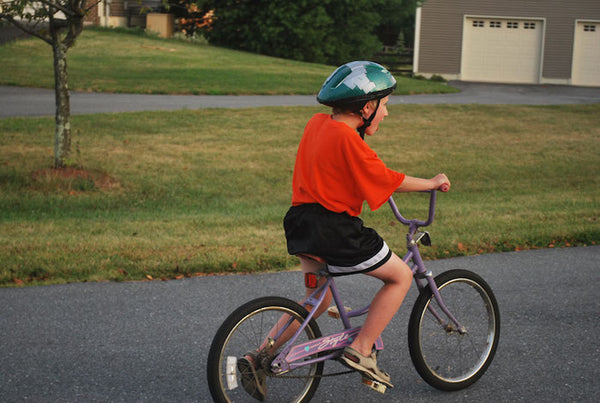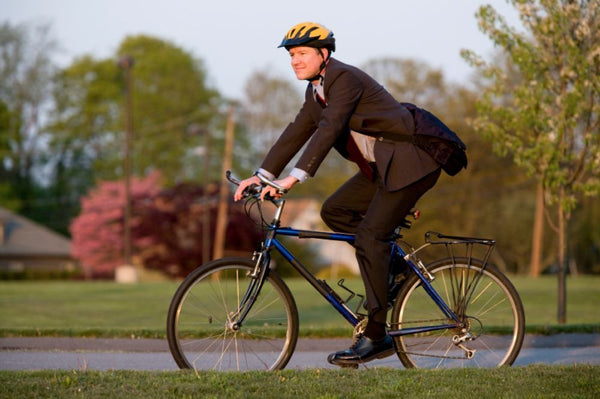Catherine James fell in love with cycling while churning through the bike legs of triathlons. As a result, when the Greenville, South Carolina, resident started getting into road racing in 2004, she naturally preferred to pedal on open roads, and against the clock, rather than to race in tight, fast elbow-to-elbow packs. "I thought my strength was endurance riding," she says. Problem was, most races on the local calendar were criteriums, the high-speed, short-course events that reward surges and sudden moves instead of the ability to pedal long distances. In fact, James found the herky-jerky pacing so alien that she was tempted to avoid the races altogether. "There was a big fear factor involved," admits James, now 37. "I lacked confidence." But James soon realized that if she wanted opportunities to race—and to be competitive—she had to learn to excel in crits. So three years ago, she started working with Dan Shelby, a certified coach and exercise physiologist at The Edge Endurance Training Center in Greenville.
Shelby was undoubtedly qualified to help a rider face down self-imposed limitations. When he was in college in the early 1980s, he says, he considered himself "hopelessly inept" at sprinting. At a spindly 5-foot-11 and 135 pounds, he was made for going uphill. Then he started riding with the best masters field sprinter in his area. "We'd do 30 to 50 sprints a week, every town-limit sign, every short climb. It was crazy, but I got faster and smarter," Shelby says. He didn't often win these contests, but he transformed himself into a competent sprinter by increasing his top-end fitness and learning to hold a faster wheel to the finish, skills that helped him earn some seconds and thirds in races.
James and Shelby discovered something that's likely true for you, too: It's possible to turn yourself into a different kind of cyclist—one who excels at the kinds of things you once thought were limitations. And it doesn't matter whether you aspire to fill a display case with trophies or simply want to enjoy the mental satisfaction of having conquered a weakness: Once you learn how to assess your skills and abilities—and how your body responds to training—you'll be well on your way down the road to reinvention.
Limits You Can Push
In one sense, human beings are like cars: Some are built to go faster than others. At the elite level, there are the Corvettes and the Porsches, specially designed to push high speeds. But most of us are more like a Honda Civic or a Ford Taurus—not the world's fastest or most versatile, but capable enough to handle most rides.
While there are limits to the body you were born with, you have a much wider range of potential than you might think, says exercise physiologist Jonathan Dugas, coauthor of the Science of Sport blog and director of clinical development at the Vitality Group, a wellness company in Chicago. And you don't have to be blessed with the physique of a Schleck brother or the lungs of Thor Hushovd to tap into it. Unless you've been training scientifically at a peak level for years, it's unlikely you've hit your genetic potential, Dugas says.
Your cycling abilities stem from several factors—some of which are impossible to change, while others are more responsive to training. Take muscle fiber, for example. We're all born with two basic types—slow-twitch and fast-twitch. Slow-twitch fibers provide the continuous muscle contractions required for pedaling long distances. The fast-twitch variety is recruited for short bursts of speed. You might think that your muscle composition overwhelmingly favors a certain type of riding, but chances are you're somewhere in the middle, Dugas says. Even at the most elite levels, athletes generally have a ratio that hovers around 60 to 40 of one type versus the other. No amount of saddle time will alter this proportion, Dugas says, but you can train your body to use both muscle types better. Put in enough base miles, for example, and your fast-twitch fibers develop more mitochondria (the structures in cells that produce power) and become more resistant to fatigue.
Another factor that can respond to training is your aerobic capacity, or muscular endurance, often measured as VO2 max. Muscles respond to endurance training by developing a greater capacity to produce energy (again, by making more mitochondria), says Neal Henderson, director of sports science at Boulder Center for Sports Medicine, in Colorado. Endurance training also improves your heart's ability to pump blood to the muscles and helps them use oxygen more efficiently. "VO2 max is modifiable," says Dugas. The extent to which you can expect to improve it depends partly on your genes: A recent study in the Journal of Applied Physiology linked specific genetic markers to greater increases in VO2 max. But your fitness level matters, too. A cyclist with average talent, who hasn't been training at a high level, might see a VO2 max increase of 20 to 30 percent after training, regardless of his genetic blueprint, while a naturally gifted athlete or one who starts with a high VO2 max might improve only 10 percent. Another measure of endurance capacity that's much more trainable is lactate threshold, says Frank Overton, head coach and owner of FasCat Coaching in Boulder, Colorado. It marks the point at which you cross from comfortable aerobic riding into the red zone.
One physiological trait that's ruled mostly by your DNA, however, is your ability to produce power. In general, more muscle mass means more power, but it's not quite as simple as that. The amount you can produce is directly proportional to how much muscle fiber you have and how much of it you can activate at a given time. For reasons that scientists still don't entirely understand, some people are able to activate a higher proportion of their muscle fibers than others. Training can only incrementally increase this.
Why Skills—And Focus—Matter, Too
Becoming a different kind of rider isn't all about physiology. "Most newbies think they stink at something because they've never learned to do it, or because it hurts," says Kristen Dieffenbach, PhD, a cycling coach and exercise scientist at West Virginia University. Sometimes what deters people from a certain type of riding is a deficit of skills, not talent. "There's a physical component to climbing, for instance, but there's also a technical aspect," Dieffenbach says. And regardless of what your limiting factor is, don't assume you've hit your apex simply because you ride a lot, Dugas says. Training regularly is not the same as training with purpose.
When Catherine James came to Dan Shelby, she had little experience at crits. Shelby set up traffic cones in a parking lot and James practiced navigating them at speed. On a grass field, she learned to stay upright while gently bumping other riders. These drills boosted her self-assurance as well as her abilities. Specific fitness training helped, too—Shelby prescribed interval sessions that mimicked the surges of a crit. Less than two years later, the self-proclaimed endurance specialist stood atop the podium at the 2010 South Carolina state criterium championships. "The beauty of cycling," says Shelby, "is there are so many ways to be good."
At BikesXpress.com we sell beach bikes, cruiser bicycle parts, cruiser bicycle accessories, beach cruiser bicycles, micargi bicycle, beach cruiser outlet, beach bicycles, beach cruiser bike, wholesale micargi bicycles Beach Cruisers" 26" Beach Cruiser Bikes / Cruiser Bicycles / Beach Bikes, 24" Beach Cruiser Bikes, 20" Beach Cruiser Bikes, Chopper Beach Cruiser Bicycle, Tandem Bicycles, Hybrid Commuter Bikes, Single Speed Bikes / Fixie / Fixed Gear Bikes / Road Bikes, Freestyle BMX Bikes, Full Suspension Mountain Bikes, Front Suspension Mountain Bikes, Children Bikes, and Bike Accessories.


